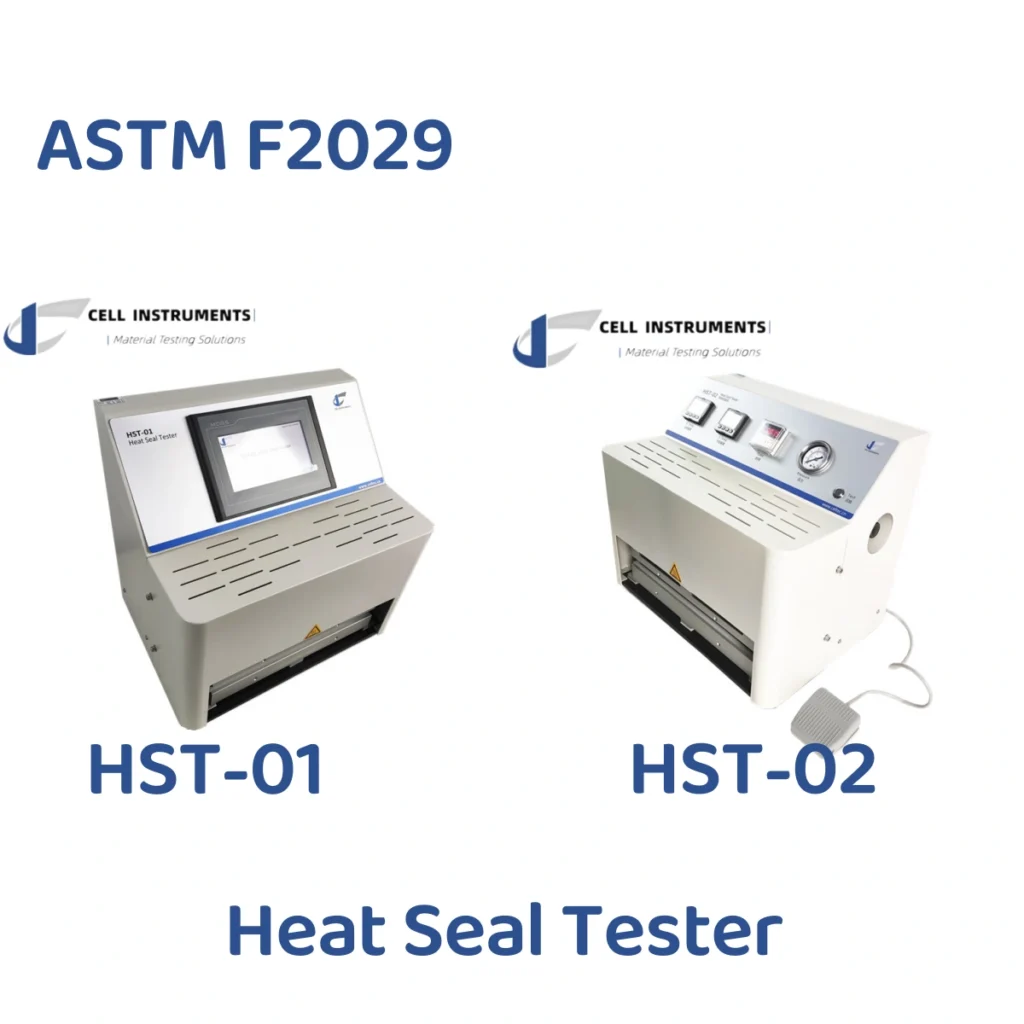Introduction of Heat Seal Strength Test Method
In flexible packaging, ensuring reliable seal integrity is vital for product protection and shelf life. The heat seal strength test method is a standardized approach used to assess the sealing capability of plastic films and laminates under controlled laboratory conditions. This article provides a detailed overview of how to conduct heat seal testing in accordance with ASTM F2029, including test setup, parameters, evaluation, and its implications for production. The content also addresses how this test links directly to the heat sealability of plastic film, with professional insights and equipment recommendations from Cell Instruments.

Understanding the Heat Seal Strength Test Method
The heat seal strength test method refers to a laboratory-based procedure for evaluating how well flexible packaging materials—such as multilayer films—can form and maintain a seal when heat and pressure are applied. This method follows the practices outlined in ASTM F2029, which provides standardized conditions for measuring the bond strength and determining the optimal sealing parameters such as temperature, time, and pressure.
Heat seals must be strong enough to withstand distribution stresses while maintaining peelability where required. ASTM F2029 serves as a foundation for achieving this balance in material development and quality assurance.
Heat Sealability of Plastic Film in Packaging Applications
The heat sealability of plastic film plays a key role in packaging performance, especially for products in food, pharmaceutical, and medical industries. Sealability is influenced by factors such as:
- Sealing layer composition (e.g., LDPE, EVA, PP)
- Material thickness
- Film structure and orientation
- Surface treatments (e.g., corona, plasma)
ASTM F2029 allows packaging engineers to quantify how changes in any of these properties affect seal strength, helping determine the sealing window of a film structure.
Cell Instruments offers precision heat seal testers that replicate the sealing conditions used in production to ensure that your film structures deliver consistent and reliable results under the specified parameters.
Why Heat Seal Testing Matters
Accurate heat seal strength test method execution reveals the sealing window of a material—a critical input for process engineers when setting sealing parameters in commercial packaging lines. It also ensures consistent product safety and regulatory compliance across packaging runs.
Furthermore, lab-scale results obtained via ASTM F2029 can inform adjustments in production environments. However, since differences exist between lab and production sealing equipment (scale, speed, jaw type), caution must be taken when extrapolating lab results.
Recommended Equipment: Cell Instruments Heat Seal Tester
To achieve repeatable and accurate results, we recommend the Cell Instruments Heat Seal Tester, which offers:
- Precise control of sealing temperature, time, and pressure
- Compatibility with ASTM F2029 and related methods
- Custom jaw configurations and protective coatings
- High-accuracy digital controls and real-time monitoring
This instrument helps R&D teams, quality control departments, and packaging engineers efficiently evaluate the heat sealability of plastic film materials under a wide range of test conditions.
Conclusion
Implementing the heat seal strength test method is essential for understanding material performance, optimizing packaging line parameters, and ensuring seal integrity across product lifecycles. By adhering to ASTM F2029, quality professionals can produce reliable data to support packaging development, quality validation, and regulatory documentation.
For best-in-class test accuracy and reproducibility, consider the Cell Instruments Heat Seal Tester—a robust solution designed to meet modern flexible packaging evaluation needs.
FAQ about Heat Seal Strength Test Method
1. What is the purpose of the heat seal strength test method?
It measures the bond strength of heat-sealed materials to ensure packaging integrity and identify optimal sealing conditions.
2. Why use ASTM F2029 for heat seal testing?
ASTM F2029 provides a standardized protocol for creating seals in the lab and helps determine heat sealability of plastic films reliably.
3. What materials can be tested with this method?
It is applicable to flexible barrier materials such as PET/PE, OPP/CPP, and multi-layer laminates used in food and medical packaging.
